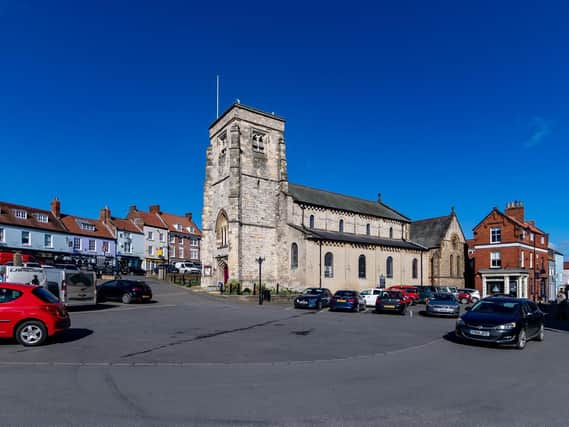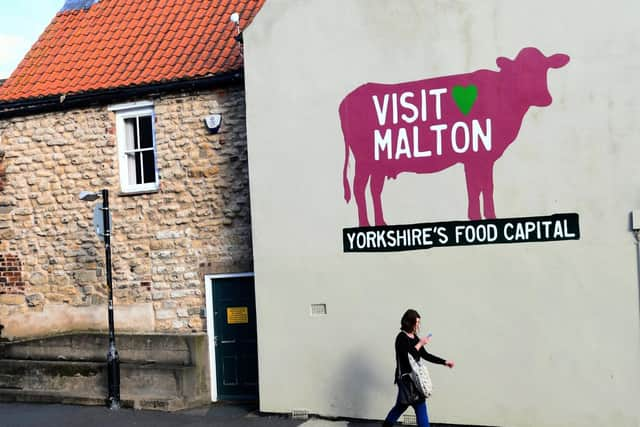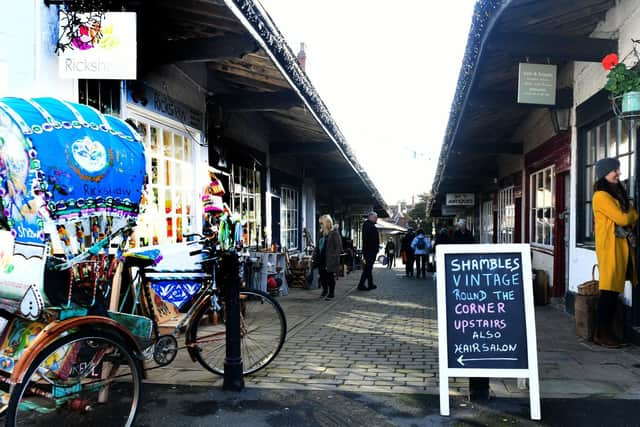Romans, breweries and horse racing - the history of Malton, a food lover's paradise


Thanks to its annual food festival, regular markets and impressive choice of independent shops, pubs and restaurants, many people make a beeline for Malton. However, food and drink is only one part of this North Yorkshire market town’s interest and appeal.
Malton can trace its origins back to Roman times, when the settlement sprang up around a large fort located close to the River Derwent. It was established during the governorship of Gnaeus Julius Agricola, the general responsible for the conquest of much of Britain, as part of the first phase of Roman military intervention in Yorkshire, just a few years after the legionary fortress at York was founded.
Advertisement
Hide AdAdvertisement
Hide AdTucked away in the Subscription Rooms on Yorkersgate, Malton Museum is well worth a visit for those who want to learn more about the town’s Roman past. It holds a vast collection of artefacts, including items unearthed at Langton Villa, a Roman villa that stood just a few miles away.


History is brought to life with a regular programme of fun, interactive activities for younger visitors, and the collection also features objects relating to the area’s prehistoric past.
Another defining moment in Malton’s story came in 1138, when it was burned down by the Archbishop of York in order to flush out the Scots, who were occupying it at the time. After it was rebuilt, it became known as New Malton, creating a clear distinction between the town that we know today and the original settlement of Old Malton, which is only a mile away.
Another near neighbour, separated from Malton only by the River Derwent, is the village of Norton-on-Derwent. Once a bustling waterway used for the transportation of coal and corn, the Derwent helped maintain Malton’s status as a trading centre prior to the arrival of the railway in 1845. The original Grade II-listed station still serves Malton and Norton-on-Derwent and sits on the York to Scarborough line.
Advertisement
Hide AdAdvertisement
Hide AdAlthough there’s very little evidence of it today, a Norman castle that played an important role in English history once stood in Malton. All that remains is a street name and a few remnants of the wall.


Short stretches of the eastern and southern sides of the outer wall can be seen just north of Castlegate, including a buttress thought to date back to the 12th century. Together with a ditch to the south-west, they offer some idea of the area that it once covered.
The original motte and bailey castle was built next to the ruins of the Roman fort. Sitting above the river crossing, it would have dominated the surrounding landscape. In the early 12th century, Henry I gave his close friend, the knight Eustace fitz John, permission to build a new stone castle. The only known illustration of this castle is on a map from 1399 in the British Library, which shows a substantial, round tower.
Eustace fitz John gained the castles and estates of Alnwick and Malton through his marriage to Beatrice de Vescy, making him a powerful force in the north-east of England. However, the family’s links with the Scottish royal family caused them problems with the English kings and, in 1138, King Stephen laid siege to Malton Castle for eight days.
Advertisement
Hide AdAdvertisement
Hide AdWhen William de Vescy died in 1314 leaving no heir, the castle reverted to the ownership of the Crown and gradually began to fall into decline. A series of disputes over its holding led to its occupation by Robert the Bruce, who is said to have wrecked it before leaving. Sir Ralph Eure inherited Old Malton in 1387 but, by 1540, Leyland described only “a mean house for a farmer” where the castle once stood.
The next Lord Eure built a magnificent Jacobean mansion on the same site and this was eventually inherited by his two sisters. However, the quarrelsome pair could not agree so a judge ordered that the house should be demolished stone by stone and divided into two piles, one for each sister.
All that remains is the lodge and the arches at the gateway. However, the site that has been central to so many colourful chapters in Malton’s past is now a peaceful, five-acre park called the Castle Garden, which is open to the public and home to all kinds of flora and fauna.
In 1713, the Borough of Malton was bought by the Honourable Thomas Watson Wentworth and, 12 generations on, much of the town is still owned by his descendants, the Naylor-Leylands, who hold the Fitzwilliam Malton Estate.
Advertisement
Hide AdAdvertisement
Hide AdAnother must-see attraction for visitors to Malton is the Woodhams Stone Collection, which is on display at Malton and Norton Heritage Centre on Commercial Street. A local history collection, it’s the work of local men Sid Woodhams and John Stone.
Sid was given a 19th century naturalist’s field microscope for his 12th birthday, which triggered a passion for collecting that remained with him throughout his adult life. John was inspired to start a collection of his own after spending his spare time helping to dust the exhibits at the local museum.
The unique collections that Sid and John amassed over a 60-year period offer a fascinating insight into the social history of the local area and, in 2011, the Woodhams Stone Collection Trust was formed in a bid to secure its future.
The collection features many items linked to the different trades and industries for which Malton became famous, including the numerous breweries operating there during the 18th and 19th centuries.
Advertisement
Hide AdAdvertisement
Hide AdAlthough many of these had disappeared by the mid-20th century, new start-ups are now reviving this tradition, including Bad Seed and Malton Brewery, which is based in a Grade II-listed building on Navigation Wharf.
It would be remiss to write about Malton without mentioning its connections with horse racing. Associated with the training of thoroughbreds for more than 300 years, it’s the third largest training centre in the UK and home to more than 1,000 racehorses.
It’s perhaps puzzling then that the town doesn’t have a racecourse of its own, but this wasn’t always the case. The earliest recorded race at Malton took place in September 1692, when the London Gazette reported a meeting at nearby Langton Wolds.
In 1882, racing enthusiast William L’Anson achieved his dream of establishing a jumps course in Malton, which was used until 1904. Every August, more than 20 local racehorse trainers invite the public to visit their stables to see the horses and learn about the area’s racing heritage as part of an annual open day event.
Advertisement
Hide AdAdvertisement
Hide AdDid I mention that Malton is also a food lover’s paradise? As well as an abundance of opportunities to shop for and sample locally-produced food and drink, there’s also a cookery school, regular walking food tours and a food map of the town that you can follow to take in all of the highlights.
With all of this to offer and more, there’s little wonder that Malton is a regular fixture on the annual “best places to live in Britain” lists.
Support The Yorkshire Post and become a subscriber today. Your subscription will help us to continue to bring quality news to the people of Yorkshire. In return, you'll see fewer ads on site, get free access to our app and receive exclusive members-only offers. Click here to subscribe.